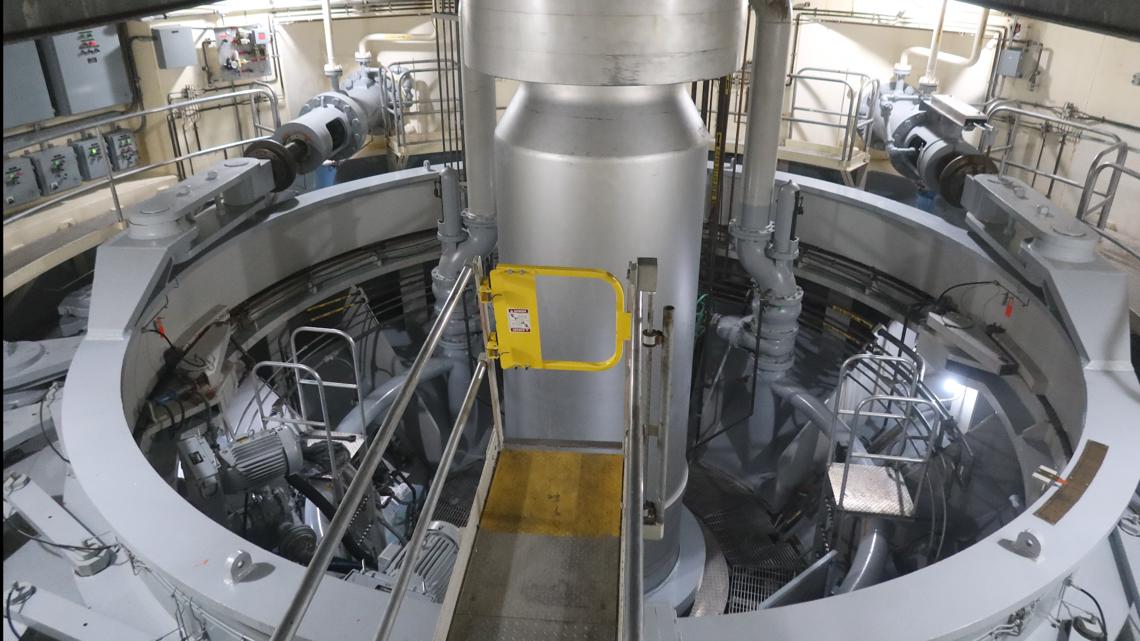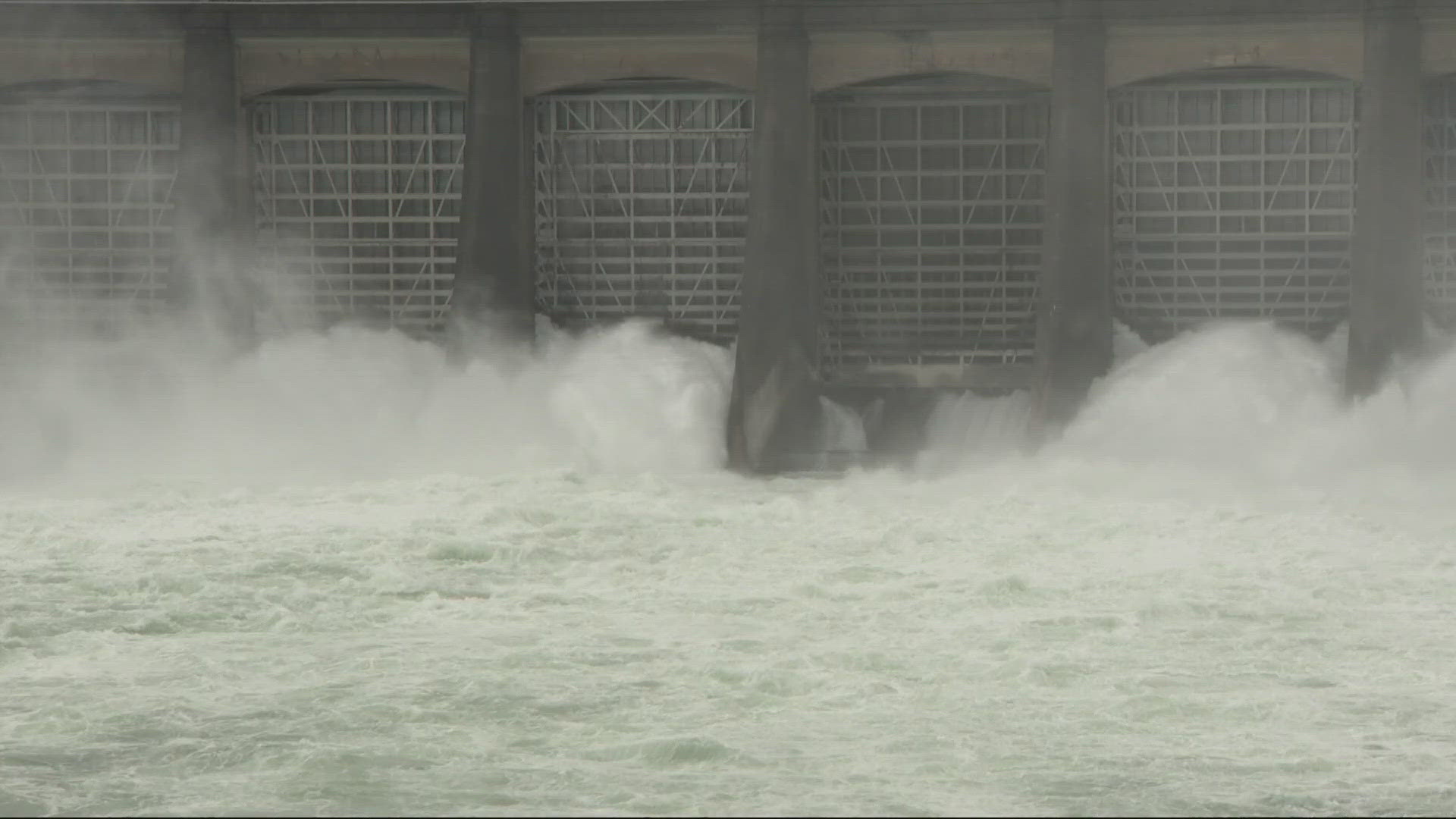BONNEVILLE, Ore. —
Everything about the Bonneville Dam is big.
The dams themselves — there are actually three, stretching between islands to cut across a nearly mile-wide section of the Columbia River — are made of nearly 2 million cubic yards of concrete. But the real magic, and what makes them such a valuable resource, happens inside the dams.
“This is Powerhouse 2,” U.S. Army Corps of Engineers park ranger Meg Sleeper explained as she entered one of the cavernous spaces on a recent tour. “There are eight large generators lined up here.”
The room itself is as long as three football fields and holds eight of the 21 hydropower generators at the dam. All together, the generators can produce some 1,227 megawatts of power, enough to power roughly 900,000 homes — all without emitting any greenhouse gasses whatsoever.
It all happens about 50 feet below the water level on the upriver side of the dam. Engineers can open and close gates that regulate the flow of water through the powerhouse. That water flows over a turbine — essentially a giant propeller — connected by a shaft to a rotor that stands 6 feet tall and 27 feet across.
The water spins the turbine, which drives the rotor at 70 revolutions per minute. The rotor has magnets with alternating poles affixed to its rim, and when those spinning magnets pass over spools of copper wire, they create electricity. That power is fed into wires run by the Bonneville Power Administration, which runs the region's electrical grid.


These dams and others like them are Oregon's biggest sources of clean energy, but they do still have downsides. They create large reservoirs of slow-moving water where rushing rivers once flowed. That water heats up more easily, causing river temperatures to rise and creating changes in the ecosystem.
Those changes have proven harmful to salmon and other fish — and then there's the more direct impact of creating physical barriers to salmon migration, which have to be mitigated with fish ladders.
But long as the river flows, so too does the power from the generators — and that 24/7 operating capability means they'll play an indispensable role as Oregon transitions toward the goal of 100% renewable energy.
Wind turbines and solar panels are great options when the wind is blowing or the sun is shining, but without reliable, cost-effective ways to store that power once it's generated, wind and solar can leave gaps in power availability.
The consistency of hydropower, which makes up more than 40 percent of the electrical generation in Oregon, makes using wind and solar more feasible, said Dan Patla, national technical expert for hydraulic turbines with the U.S. Army Corps of Engineers.
“It enables the other renewable energy sources to be incorporated into the grid seamlessly,” he said. “What we have is what I consider to be a renewable energy, making other renewable energies possible.”

